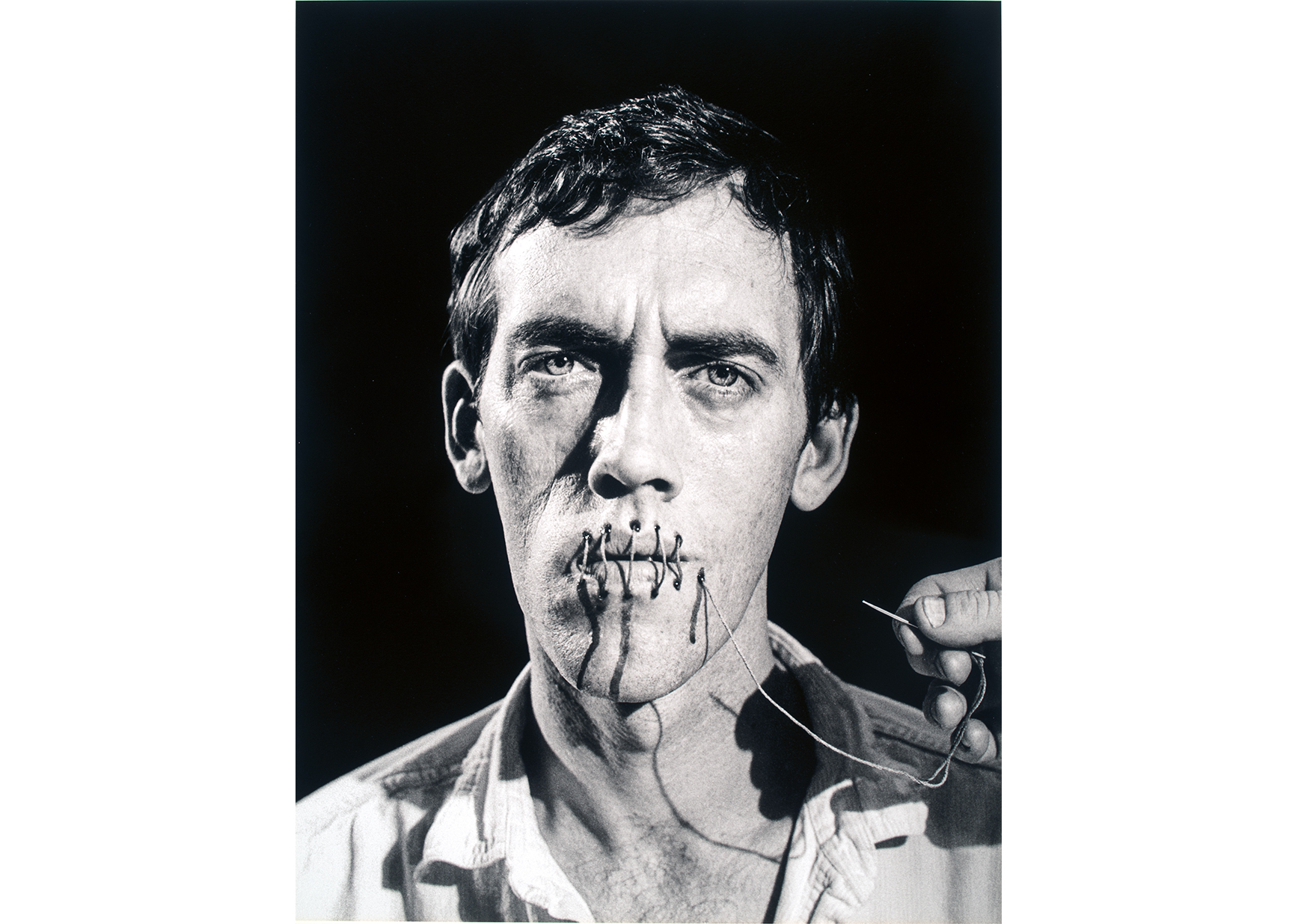African poet and scholar Amadou Hampâté Bâ (1900–1991) brilliantly stated, “Every time an old man dies in Africa, it is as if a library has burnt down.” His observation was closely tied to his dedication to preserving oral traditions but perhaps such a poignant reflection could be made about any one person in the world. When an artist dies, especially when young in their career, does a museum die with them?
When David Wojnarowicz died from AIDS-related complications in 1992, he was just 37.
Countless works of art have been created in response to the HIV/AIDS epidemic, and perhaps one of the most powerful is this photograph taken for a collaboration between Wojnarowicz and the German documentary and portrait photographer, Andreas Sterzing, who lived in New York for 20 years. This work of art is so impactful that in 2020 it was named one of the 25 most influential works of American protest art since World War II by The New York Times Magazine.
During the mid 1980s, Sterzing documented art installations and activities throughout the East Village and “Pier 34” artist communities. Sterzing knew both Wojnarowicz and the German gay rights activist and filmmaker, Rosa von Praunheim, who collaborated with fellow filmmaker Phil Zwickler to create the 1990 documentary Silence = Death. The title of the film references the slogan made famous by the mid-1980s poster campaign by the AIDS activist group, ACT UP.
In the film Silence = Death, artists and writers such as Keith Haring, Allen Ginsberg, and Wojnarowicz respond to the AIDS epidemic. The representation by Wojnarowicz of inflicting pain upon his body by apparently sewing his lips together serves as a protest to the silencing of the devastating impact of AIDS by both politicians and society at large beginning in the mid-1980s.
Wojnarowicz was an active member of the East Village art scene in New York City in the 1980s, and his former partner Peter Hujar’s AIDS diagnosis and death in 1987 led him to more direct political activism with an emphasis on the epidemic. 1987 was also the year that AIDS activist Cleve Jones created the first panel for what has become a 1.2-million-square-foot AIDS Memorial Quilt and the year President Ronald Reagan made his first public speech about the epidemic, more than six years after the first cases were reported in the United States. Two years later, Wojnarowicz’s activism led him to create this work with Andreas Sterzing.
David Wojnarowicz was criticized and censored during and after his lifetime for the visceral works of art he created. A creation such as this one, embodied in stark black and white by Sterzing, triggers our kinesthetic understanding. We can imagine the physical discomfort of a needle piercing skin, and we know the color of the lines trailing down the artist’s chin. Today, this image may also be seen through the lens of censorship and the artist’s early death. Wojnarowicz stated, “I think what I really fear about death is the silencing of my voice. I feel this incredible pressure to leave something of myself behind.”
Recently, historians and curators have explored the rich artistic history of New York in the 1980s, a time of vibrancy despite the ravaging of the art community by AIDS. As an important figure in this story, Andreas Sterzing has been included in several museum exhibitions and associated publications. The artist has also made his numerous photographs available for online viewing, including slideshows Something Possible Everywhere: Pier 34 NYC 1983–84 and Alphabet City & the East Village Art Scene NYC 1980s.
Prior to the Museum’s 2020 purchase of Andreas Sterzing’s photograph, David Wojnarowiz (Silence = Death); New York, artistic response to the AIDS epidemic was not visibly represented in the Delaware Art Museum’s collection. This acquisition supports the Museum’s ability to share works of art that translate the expanse of human experience into visual form.
Join me for Art Chat on April 15 when I speak with Andreas Sterzing about art in New York City in the 1980s with a special focus on creative activities at Pier 34 and the work of Robert Jones and David Wojnarowicz.
Margaret Winslow
Curator of Contemporary Art
Image: David Wojnarowicz (Silence=Death); New York, 1989/2014. Andreas Sterzing (born 1956). Pigment print, 24 × 18 1/2 inches. Delaware Art Museum, Acquisition Fund, 2020. © Andreas Sterzing.

